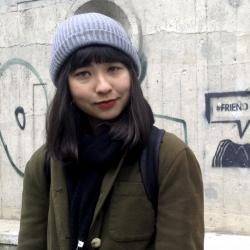
Even in Iceland, design is not an island. There is an inherent function associated with “design” that allows it to eclipse art without being absorbed. Fashions are worn, products are used, buildings are built. Design happens within a context. But Iceland itself is an island (this we know). And no matter how good the design is, it needs its context in order to be presented, to become the full realization of itself. Like a fresh graduate backpacking their way through Europe.
 The Icelandic Design Centre was created to support new visions, promote current designs, and push Icelandic design through process to product. With events like the Icelandic Design Awards, showcases like DesignMarch, and grants like the Design Fund, the Centre works to promote Icelandic designers in a practical and knowledgeable way. They create a context. Ólöf Rut is a project manager at the Centre. We caught up with her to discuss what she thinks are the noteworthy design projects that emerged in 2016.
The Icelandic Design Centre was created to support new visions, promote current designs, and push Icelandic design through process to product. With events like the Icelandic Design Awards, showcases like DesignMarch, and grants like the Design Fund, the Centre works to promote Icelandic designers in a practical and knowledgeable way. They create a context. Ólöf Rut is a project manager at the Centre. We caught up with her to discuss what she thinks are the noteworthy design projects that emerged in 2016.
Immediately she offered two projects: 1+1+1, a furniture design collaboration between three distinct studios, and Ari Jónsson’s red-algae water bottle. The projects exemplify the major themes in Icelandic design this year: process and environment, respectively.

1+1+1 is a collaborative project between designers from Iceland, Sweden and Finland. The concept is based on the paper game where each person draws one piece of a creature then folds the paper over, while the next player adds their own parts. The studio took that idea and applied it to furniture design, each designer creating one part of the product without knowledge of the other two designs. In 2015 they began with floor lamps and have since expanded to include the cabinet, the mirror and the candleholder.
“Everybody wants to know about Ari’s water bottle, it’s gone viral,” Ólöf says. Since presenting its prototype at DesignMarch this year, Ari’s 100% biodegradable plastic bottle alternative has received dozens of write-ups and has Ólöf fielding media calls about it on the daily.

The winner of this year’s Icelandic Design Award incorporated environmental sustainability into one of the most fundamental human processes: growth. ‘As We Grow’ is a line of children’s clothing that grows with the child, lasting generations and cutting back on the constant desire to purchase new clothes. “They won the award because their process was focused on environmental values, and because they have been able to establish themselves in markets both local and abroad,” Ólöf says.

Gagarín is an experience design team that focuses on interactive media designs. This year, for the 50th anniversary of Landsvirkjun, the National Power Company of Iceland, Gagarín was hired to install an interactive exhibition at Ljósafossstöð, one of Iceland’s oldest hydroelectric stations. Their exhibit is an exploration of electricity, inviting and informative for visitors of the countryside destination.
In the fashion world Ólöf mentions Kiosk, a friendly Laugavegur co-op shop owned and operated by eight Icelandic designers, including Hildur Yeoman who received attention this year for her ‘Transcendence’ line and exhibition. Katrín Alda also got a shout-out for her shoe line ‘Kalda’, which turned up in all sorts of corners in the international fashion media. “It is so funny to see a picture of this Icelandic shoe design next to an image of Britney Spears and Justin Timberlake,” Ólöf says, referring to a shout out from Sunday Times Style which pictured the Kalda denim-on-denim-on-denim mule.
At Hafnarborg an exhibition called ‘Experiment—Clay and More’ caught Ólöf’s attention. The exhibition is a collection of clay works from participants in all different fields of visual arts. Sigrún Norðdahl’s ‘Sickle’ attempted to apply high-tech materials to typically one-time-use objects. Theodora Alfredsdóttir’s ‘Subterranean Formation’ created a “research led investigation,” firing clay in the ground without any prior mold and allowing the medium to create its own shape. The clay was then excavated with the same processes as an archeological dig to reveal the object’s appearance. Like the Icelandic Design scene, the object both works with and is worked by its surroundings. Thanks Ólöf, for the dig.
Buy subscriptions, t-shirts and more from our shop right here!

















